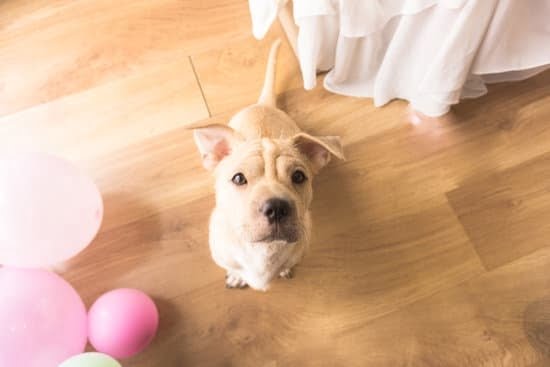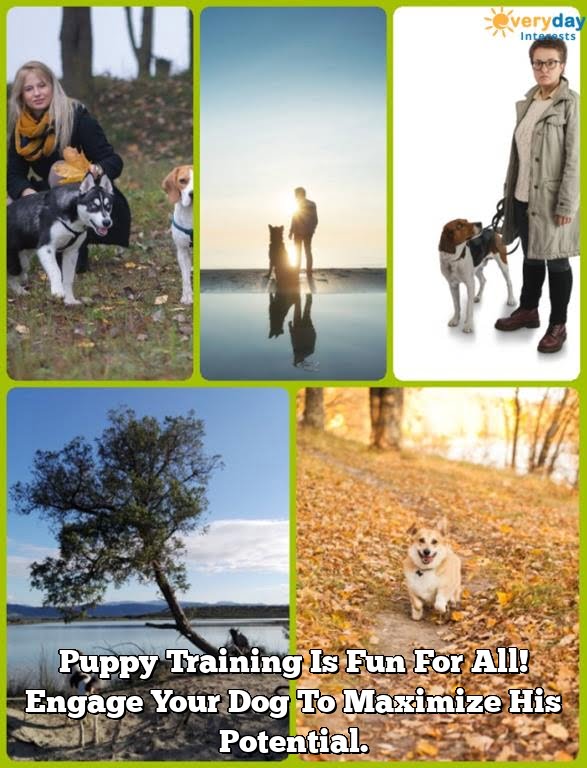Dog training can sometimes feel like a chore, both for the owner and the dog. However, it is essential to understand the importance of making training sessions enjoyable and engaging for both parties involved. By incorporating fun into the training process, not only can we strengthen the bond between owners and their furry friends, but we can also create a positive learning environment that nurtures obedience and good behavior.
Training should be seen as an opportunity to bond with your dog and build a strong relationship based on trust and understanding. Fun training sessions allow for positive interactions that motivate dogs to actively participate in the learning process. When dogs associate training with enjoyment, they become more eager to learn new commands and tricks, ultimately leading to better results.
Positive reinforcement techniques play a significant role in creating a fun training environment. Incentives such as treats and rewards prove highly effective in motivating dogs to perform desired behaviors. By rewarding good behavior, we establish clear communication with our dogs, reinforcing what they are doing correctly while making them excited about future training sessions.
The Power of Positive Reinforcement
Using positive reinforcement techniques is a highly effective way to make dog training fun and enjoyable for both the owner and the dog. By incorporating treats and rewards into training sessions, owners can create a positive and motivating environment that encourages active participation from their furry friends.
One of the main benefits of positive reinforcement is that it allows dogs to associate good behavior with rewards, making them more likely to repeat those behaviors in the future. This not only speeds up the learning process but also helps maintain a fun atmosphere during training sessions. When dogs receive treats or rewards for performing desired behaviors, they feel encouraged and motivated to continue participating in the training process.
To incorporate treats and rewards effectively, it is important to choose high-value treats that your dog finds irresistible. These can include pieces of cooked meat, soft dog treats, or even small portions of your dog’s regular meals. Always remember to use small-sized treats so that your furry friend can quickly consume them without disrupting the flow of training.
In addition to treats, other types of rewards such as praise, petting, or playtime can also be used. Each dog has their own unique preferences, so it’s essential to experiment with different types of rewards to discover what motivates your canine companion the most. By incorporating positivity and reward-based training methods into your sessions, you’ll not only create a fun experience for your dog but also strengthen the bond between you and your furry friend.
Choosing the Right Training Activities
When it comes to dog training, one size does not fit all. Just like humans, dogs have unique personalities and preferences that should be taken into consideration when selecting training activities. By tailoring fun exercises to your dog’s personality, you can create an engaging and enjoyable training experience for both you and your furry friend.
Different dog breeds and personalities have different needs and energy levels. For example, high-energy breeds such as Border Collies or Australian Shepherds may thrive in agility courses or flyball training, where they can utilize their physical abilities and intelligence. On the other hand, more laid-back breeds like Basset Hounds or Bulldogs may prefer obedience games or puzzle toys that challenge their mental capabilities.
To help you choose the right training activities for your dog’s personality, here are some examples:
- Agility Courses: Set up a mini agility course in your backyard using objects like tunnels, jumps, and weave poles. This is ideal for active and energetic dogs who enjoy physically demanding exercises.
- Interactive Toys: Invest in interactive toys such as treat-dispensing puzzles or snuffle mats that encourage problem-solving skills. This can keep intelligent dogs entertained while stimulating their minds.
- Obedience Games: Teach your dog fun obedience commands like “sit,” “stay,” or “roll over” through positive reinforcement techniques. These games are suitable for any breed or temperament.
Remember to always consider your dog’s health and limitations when selecting training activities. Older dogs or those with physical disabilities may require low-impact exercises or modified versions of certain activities.
By tailoring fun exercises to your dog’s personality, you can ensure that they stay engaged and motivated throughout the training process. This will not only make the training sessions more enjoyable but also enhance the bond between you and your furry friend.
| Dog Personality | Suggested Training Activities |
|---|---|
| High-energy and intelligent breeds | Agility courses, flyball training, interactive toys |
| Laid-back and less active breeds | Obedience games, puzzle toys |
| All breeds | Basic obedience commands, socialization activities |
| Dogs with physical disabilities or limitations | Low-impact exercises, modified versions of activities |
The Role of Play in Training
Playtime as Interactive Training
Incorporating play into training sessions is an effective way to make learning fun for dogs. By transforming daily activities into interactive play, owners can engage their dogs mentally and physically while reinforcing positive behaviors. One example of interactive play that doubles as training is a game of tug of war.
This game can help dogs build strength, learn impulse control, and practice commands like “drop it” or “leave it.” Similarly, games of hide and seek encourage dogs to use their senses and problem-solving skills as they search for hidden toys or treats. These activities not only make training enjoyable but also provide mental stimulation for dogs.
Fulfilling a Dog’s Natural Instincts through Play
Dogs have natural instincts that can be harnessed through play during training sessions. For instance, the game of fetch taps into a dog’s natural urge to retrieve objects. Owners can incorporate command training by teaching their dog to drop the toy at their feet before retrieving it again.
Additionally, participating in scent-based games such as sniffing out treats hidden around the house allows dogs to exercise their sense of smell while practicing commands like “find it” or “stay.” By satisfying a dog’s natural instincts through play, owners create an engaging and fulfilling training environment.
Making Play Multifunctional: Combining Exercise and Training
Dogs require regular exercise to maintain physical health, so incorporating exercise into training sessions adds another layer of enjoyment. Activities such as playing fetch in the park or going on structured walks can be used as opportunities for leash training and practicing commands like “heel.”
Incorporating obedience exercises during these activities helps reinforce good behavior while providing an outlet for physical energy. The combination of exercise and training not only makes the session more enjoyable for both owner and dog but also enhances the dog’s focus and attentiveness.
By utilizing play as a means of training, owners can create an enjoyable and effective learning experience for their dogs. Through interactive training, fulfilling natural instincts, and combining exercise with training, owners can tailor playtime to their dog’s individual needs while achieving their training goals. The next section will explore the role of socialization in making dog training fun through group playdates.
Incorporating Socialization
When it comes to dog training, incorporating socialization not only adds an element of enjoyment but also contributes to a dog’s overall development. Group playdates are a fantastic way to provide dogs with the opportunity to interact with other dogs in a supervised and controlled environment. This helps them build confidence, learn appropriate behavior, and enjoy their training sessions even more.
One of the benefits of incorporating socialization into dog training is that it allows dogs to learn from one another. Through group playdates, dogs can observe and mimic each other’s behaviors. This helps reinforce desired behaviors such as appropriate greetings, sharing toys, and taking turns. Additionally, being around other well-behaved dogs can serve as a positive influence on a dog’s behavior.
To organize a successful group playdate, it’s important to ensure proper supervision and control over the environment. Set clear rules and boundaries for both dogs and owners participating in the playdate. Encourage positive behavior by rewarding good manners and redirecting inappropriate behavior when necessary.
Here are some tips for making group playdates enjoyable for everyone involved:
- Invite well-mannered and sociable dogs with compatible energy levels.
- Provide plenty of interactive toys and games for enrichment.
- Create fun training challenges or obstacle courses for the dogs to navigate together.
- Incorporate obedience games like “Simon says” or “musical sits.”
Remember that every dog is unique, so be mindful of their individual needs during these playdates. Some dogs may prefer smaller groups or quieter environments while others may thrive in larger groups with more activity.
Fun Training Tools and Gadgets
Introduction
In today’s digital age, technology has become an integral part of our lives, including our interactions with our furry companions. When it comes to dog training, interactive technology offers a range of tools and gadgets that can transform learning into an enjoyable game for both the owner and the dog. These innovative devices not only make training sessions more engaging but also provide additional mental stimulation for your furry friend.
Treat-Dispensing Toys
One exciting and popular training tool is the treat-dispensing toy. These toys are designed to hold treats or kibble inside, encouraging dogs to interact with them in order to be rewarded with a tasty treat. By incorporating these toys into training sessions, you can add an extra element of fun and motivation for your dog.
For example, you can fill the toy with treats and roll it across the floor, prompting your dog to chase after it. This not only works on their physical coordination but also encourages problem-solving skills as they figure out how to retrieve the rewards.
Puzzle Games
Another interactive technology that can make learning fun is puzzle games specifically designed for dogs. These games usually involve hiding treats or toys within a puzzle-like structure that the dog needs to solve in order to access their reward.
Puzzle games come in various levels of difficulty, allowing you to tailor them according to your dog’s skill level. They provide mental stimulation by challenging your dog’s problem-solving abilities while also giving them a sense of accomplishment when they successfully navigate through the puzzles.
Clickers
Clickers are simple yet effective training tools that use sound reinforcement to communicate with your dog during training sessions. With just a press of a button, a clicker emits a distinct clicking sound that marks the exact moment your dog performs a desired behavior correctly.
The sound serves as instant feedback for your dog, making it easier for them to understand which actions are being reinforced. Clicker training not only adds an element of fun but also enhances communication between you and your furry companion, resulting in more effective and enjoyable training sessions.
Incorporating interactive technology into dog training can significantly enhance the overall experience for both the owner and the canine. These fun training tools and gadgets take advantage of dogs’ natural instincts and desire for rewards, making learning a game that is engaging, enjoyable, and mentally stimulating. By utilizing treat-dispensing toys, puzzle games, clickers, and other interactive technologies, you can transform regular training sessions into exciting challenges that strengthen the bond between you and your furry friend.
Teaching Tricks and Command Sequences
Teaching tricks and command sequences can be a fun and entertaining way to enhance the training sessions with your dog. Not only does it provide mental stimulation for your furry friend, but it also adds an element of entertainment to the training process. Whether you have a puppy or an adult dog, there are a variety of tricks and sequences that can be easily taught to dogs of different skill levels.
One entertaining trick that many dogs enjoy learning is “roll over.” To teach this trick, start by getting your dog into a down position. Hold a treat close to their nose and slowly move it towards their shoulder.
As they follow the treat with their head, guide them onto their side until they roll all the way over. Once they complete the roll, give them the treat and reward them with praise. Repeat this process several times until they get comfortable with rolling over on command.
Another fun command sequence is teaching your dog the “spin” command. Begin by holding a treat in front of their nose and make small circular motions with the hand holding the treat. Gradually increase the size of the circles until your dog completes a full spin. As soon as they accomplish this, reward them with a treat and praise. Practice this sequence regularly to reinforce the behavior.
In addition to these tricks, there are various other commands such as “high five,” “play dead,” or even teaching your dog to put away their toys in a designated area. The key is to break down these tricks or command sequences into smaller steps, using positive reinforcement techniques such as treats and praise along the way.
By incorporating entertainment into training sessions through teaching tricks and command sequences, you not only provide mental stimulation for your dog but also create an enjoyable atmosphere for both you and your furry friend. This can help strengthen the bond between you and your pet while making training sessions more engaging and effective.
| Trick/Command | Description |
|---|---|
| Roll Over | Guide your dog onto their side until they roll all the way over. Reward with treat and praise. |
| Spin | Make small circular motions with a treat in front of your dog’s nose, gradually increasing the size of the circles until they complete a full spin. Reward with treat and praise. |
| High Five | Teach your dog to raise their paw to touch your hand when you offer it. Use positive reinforcement and reward them each time they successfully give a high five. |
Celebrating Progress
In conclusion, celebrating progress is an essential aspect of making dog training fun and enjoyable. Recognizing achievements and highlighting success stories not only motivates the owner to continue their training efforts but also serves as a source of inspiration for others. By acknowledging milestones throughout the training journey, both the owner and the dog can experience a sense of accomplishment and fulfillment.
One way to celebrate progress is by setting small goals and rewarding the dog when they reach them. This can be done through a variety of means such as verbal praise, petting, or even giving treats. For example, if the dog successfully learns a new command or completes a complex trick sequence, the owner can show their appreciation by throwing a mini celebration or organizing a playdate with other dogs to showcase their skills.
Highlighting success stories from other dog owners who have made training fun can serve as encouragement for readers to persevere in their own efforts. These stories act as testimonials, demonstrating that it is possible to achieve positive results while enjoying the process at the same time. Success stories also provide new ideas and techniques that readers may not have considered before, expanding their toolkit for making training sessions more engaging and exciting.
Overall, celebrating progress in dog training helps foster a positive atmosphere and strengthens the bond between owner and dog. By recognizing achievements along the way and sharing success stories with others, owners are encouraged to continue on their training journey with enthusiasm and joy. Through these celebrations, both owners and dogs can experience the fulfilling rewards of fun-filled training sessions that ultimately lead to a well-behaved and happy furry friend.
Frequently Asked Questions
How do I get my dog excited about training?
To get your dog excited about training, it is important to make the training sessions fun and engaging for them. Use positive reinforcement techniques such as giving treats or praise when they successfully follow a command. Be patient and consistent in your training approach, breaking down commands into small steps that are easy for your dog to understand.
Incorporate interactive toys and games into the training process, as this can make it more enjoyable for them. Additionally, using a happy and upbeat tone of voice and incorporating gestures can help capture their attention and keep them excited about learning new things.
What is the number one rule in dog training?
The number one rule in dog training is consistency. Consistency is key in teaching dogs appropriate behaviors because they thrive on routine and clear expectations. It is important to establish consistent rules and boundaries for your dog from the beginning, so they understand what is expected of them at all times.
This means using the same commands, rewards, and consequences consistently across different situations. If you allow certain behaviors sometimes but not others, it can confuse your dog and hinder their learning process. By being consistent in your training methods, you will provide a clear path for your dog to follow and increase their chances of success.
How do you mentally tire a dog?
Mental exercise is just as crucial as physical exercise for dogs to stay balanced and content. To mentally tire a dog, you can incorporate activities that stimulate their brain and challenge their problem-solving skills. Puzzle toys or treat dispensers encourage dogs to figure out how to access hidden treats by manipulating the toy in various ways.
Engaging in obedience training or teaching new tricks also keeps your dog mentally active as they have to focus on understanding new commands or behaviors. Another way to mentally tire a dog is through scent work or nose games where they have to use their sense of smell to find hidden objects or treats around the house or yard. Overall, providing mental stimulation through various activities helps prevent boredom in dogs while keeping their minds sharp and satisfied.

Welcome to the blog! I am a professional dog trainer and have been working with dogs for many years. In this blog, I will be discussing various topics related to dog training, including tips, tricks, and advice. I hope you find this information helpful and informative. Thanks for reading!





